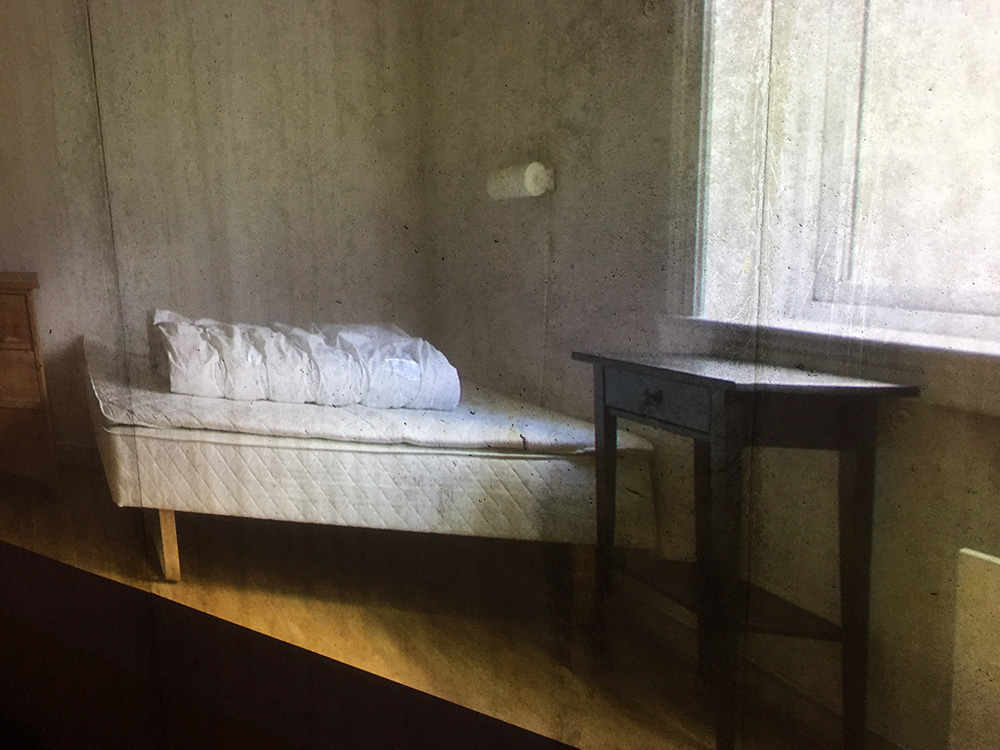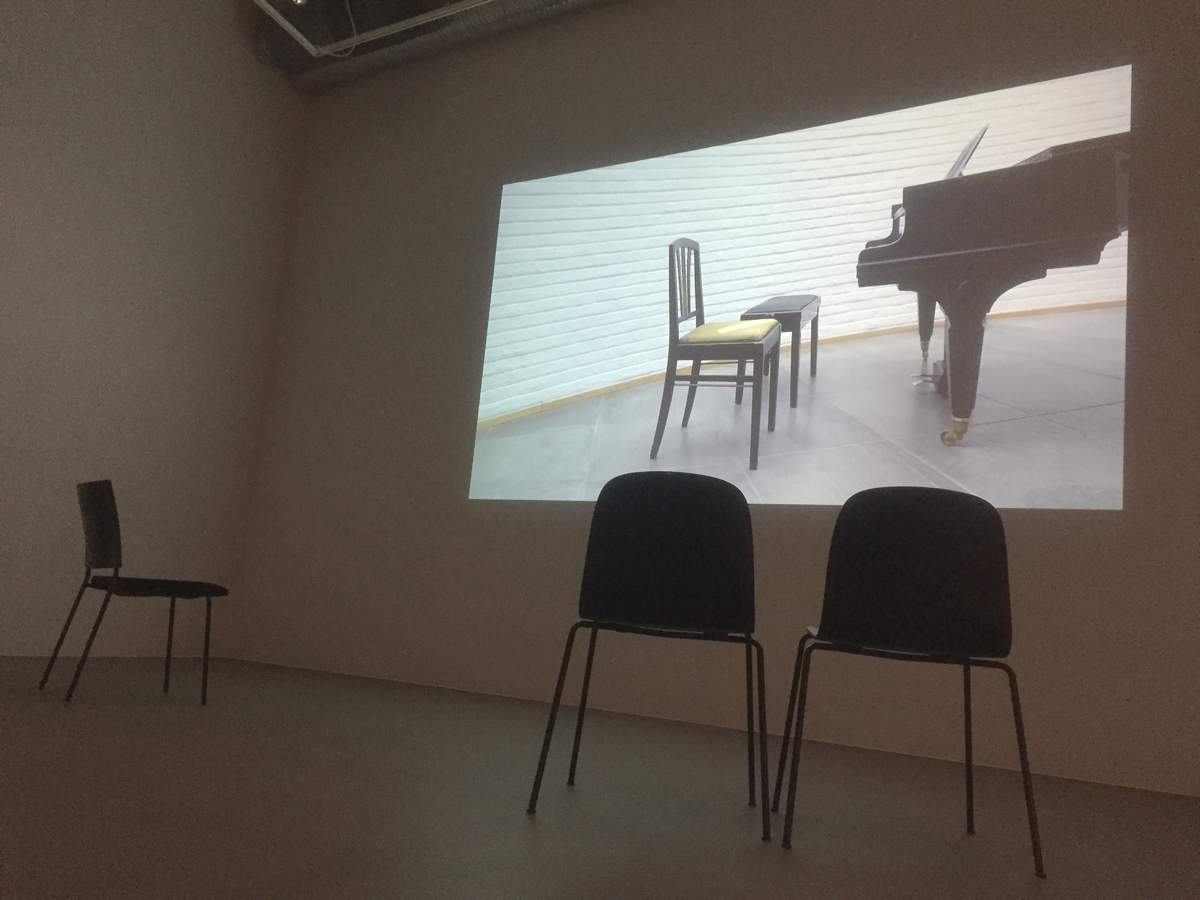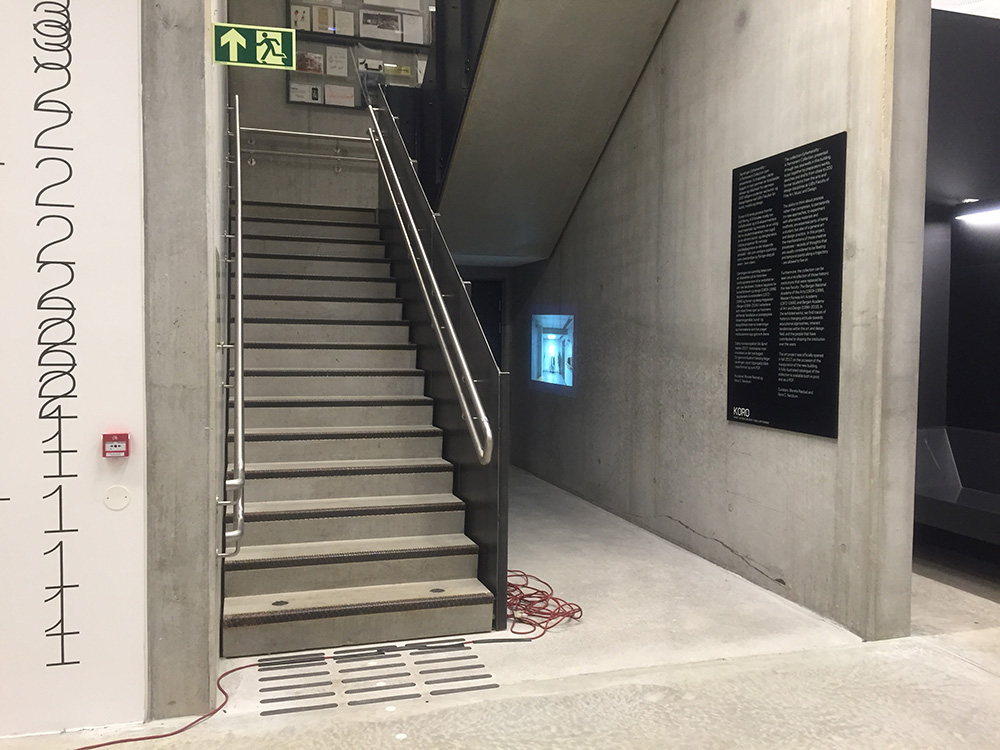Journal Entry January 2018
Interrogating through practice the consequences of re-situating video in architectural space.
While experimenting with siting my work as a series of projections at locations around the KMD building, I realised that I was much more intrigued by the act of projecting the work into anonymous overlooked spaces such as stairwells where it might be "found" by a passer-by than by mounting formal cinema-like screenings in the gallery space. I was also really fascinated by the way in which the interior surface or "skin" of the building began to bleed through the projected images, becoming a part of the surfaces depicted in the image, as they became a part of the skin of the building (the surface-become-screen is the point at which the video image and space meet). What began to emerge in my mind was the idea that the video image-making I’ve been working with was perhaps less an end in itself and instead a material with which I could work to respond to a space or site: a part of the process of response, not in itself a self-contained end-point to that response.
This has set me thinking afresh about the role of the images within my work, which have been for a long time, framed and bounded objects and the end-points of my practice in themselves. In the light of my most recent experiments, screening videos of sites and events in the way I have been doing over the past few months, without consideration for the surroundings in which the images are shown, seems to create a somehow incomplete and unsatisfactory process compared to the potential offered by siting work. I'm now thinking about how I can develop the possibilities of video installation and the situated image’s power to reflect something of my response to either the space in which the video was created and/or my response to the space in which it's shown… or maybe even a way of responding to some other space, which is neither the one depicted in the video nor the space of the installation.



